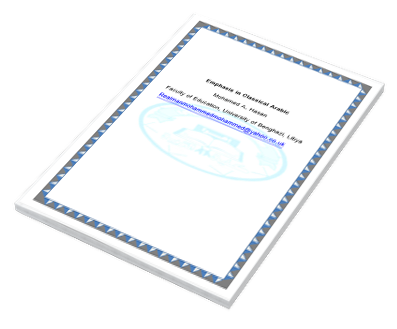Emphasis in Classical Arabic
DOI:
https://doi.org/10.37376/fesj.vi6.612Abstract
This study reports on /tafxi:m/ Emphasis in classical Arabic (CA). It studies and defines emphasis in CA in modern articulatory phonetic context. This study is mainly document-based research. Some earlier related works are reviewed to see how they study and define emphasis in CA. The data of this study are purposively collected through the secondary data collection method. This method is described as the process of making use of existing data collected by someone other than the user (Donnellan and Richard, 2013). Modern articulatory phonetic parameters (MAPP) are used to analyze the data of this study. MAPP are a set of criteria used to show how the phonetic features of sounds interact in the course of an utterance (Collins and Inger, 2006). This study concludes that emphasis in CA refers to plosive and fricative consonants which are articulated or co-articulated in the velar, uvular or pharyngeal regions. Further, this study reveals that most emphatic consonants (ECs) in CA are obstruent. When obstruent consonants, i.e. plosives fricatives and affricates are articulated or co-articulated in the velar, uvula or pharyngeal regions, they are more audible than anywhere else in the vocal tract.
Downloads

Downloads
Published
How to Cite
Issue
Section
License
Copyright (c) 2021 Faculty of Education Scientific Journal

This work is licensed under a Creative Commons Attribution-NonCommercial-NoDerivatives 4.0 International License.














